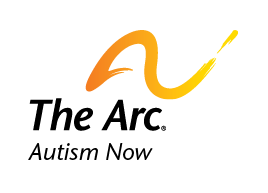Bullying and Autism Spectrum Disorder
Contents
- Introduction
- Where does bullying happen?
- What are the consequences of bullying?
- Preventing Bullying
- Addressing Bullying
- References
Introduction
Autistic people, irrespective of specific diagnosis, are at extreme risk for bullying and abuse throughout their lives. Bullying is anything someone does or says, or threatens to do or say, that is intended to emotionally or physically hurt someone else. It can occur in schools, homes, communities, workplaces, and other institutions and programs. To underscore that point, a 2002 study from Comprehensive Issues in Pediatric Nursing found that 94 percent of students with Asperger Syndrome, one autism spectrum disorder diagnosis, are bullied1.
Bullies often target Autistic people because their social and communication deficits are obvious to predators. These kinds of predators may choose targets on perceived inability to respond assertively to bullying. The inability to recognize sarcasm and subtleties of speech can lead bullies to exploit Autistic people by pretending to be their friends or friendly while subtly mocking or hurting them, or creating a situation where the Autistic person will be publicly humiliated. This often happens with the bully telling the Autistic person to do something, or asking him or her lewd questions with implicit meanings that the Autistic person may not detect immediately.
Where does bullying happen?
Autistic students in schools can face bullying for their status as a “special education student” (or “sped”), their less-developed social skills, or their special interests. Some bullies pretend to be friends with the Autistic student, who is desperate to make friends, while actually mocking him or her in front of others. As well as the high incidence of bullying in schools, Autistic people in the workplace are at risk for social ostracism from their coworkers, exploitation by their superiors, and other forms of bullying. It can happen anywhere an Autistic person lives, goes to school, works, or participates in programs.
What are the consequences of bullying?
Some Autistic people develop Post-Traumatic Stress Disorder (PTSD) or similar symptoms as a direct result of bullying during childhood or adolescence. Symptoms of PTSD include frequent flashbacks, increased incidence of panic attacks, high levels of anxiety, inability to discuss the source of the anxiety or cause of the PTSD, and avoidance of people, places, or things that remind an individual of the stressors that caused the PTSD.
Social anxiety problems, like avoidance of public places or events, phone calls, or conversation, can be exacerbated, with some Autistic people becoming extremely insecure about attempting to form or maintain relationships with others due to experiences with bullies who posed as friends.
Bullying also creates an environment of extreme hostility for the Autistic person. For Autistic students, bullying can result in lowered grades. In the workplace, it can mean decreased or lower work performance. This hostility and intimidation can lead to depression, suicidal thoughts, and less motivation in general.
Preventing Bullying
There are two aspect to preventing bullying. One aspect addresses the needs and abilities of the Autistic person to prevent bullying, and the other aspect addresses the attitudes and environment in a place that leads to bullying.
Autistic people can be educated about different forms of bullying, including unhealthy friendships or romantic relationships, and taught specific social skills to address different types of bullying situations. Some strategies can include talking to a teacher, administrator, or supervisor about a bullying incident and demanding immediate redress or intermediation; confronting the bully directly; or self-advocating to a teacher, administrator, or supervisor for accommodations that could mitigate the risk of bullying (such as moving to a different location in a classroom or office).
Members of a community—a school, workplace, institution, or neighborhood—can be educated about the nature of autism and shared characteristics of Autistic people, or other disabled people as well. If there is an environment of encouragement and acceptance of others, the chance that someone will target another person on the basis of a marked difference, such as a deficit in social skills or communication abilities, will be lowered.
In schools, assigning proactive hallway monitors or adult buddies to an Autistic student can reduce the chance of bullying during the most chaotic and least structured portion of a school day—transitioning between classes. In workplaces, giving an Autistic employee a private space in which to work with easy access to a supervisor’s office can reduce exposure to unfamiliar social situations or potential for bullying by colleagues.
Addressing Bullying
Sometimes prevention comes too late, and bullying has already happened. Autistic people may not realize they are being bullied, may be unwilling to seek help, or may not know how to get help in a bullying situation. But when a bullying incident or situation becomes known to a parent, a teacher, a supervisor, or anyone else in a community, it is imperative that the Autistic person is removed from the situation as much as possible. The bully needs to be punished or sanctioned in an appropriate way in order to make it clear that bullying disabled people is not acceptable. Sometimes, holding workshops or presentations about bullying or disability can be effective in educating other members of a community—those who are often the bystanders when bullying happens.
When an Autistic person finds him or herself in a bullying situation, the best recourse is to seek immediate help from a parent, teacher, administrator, or supervisor. Tell someone what happened; give as much information as possible; and specifically demand immediate redress. In some situations, it is best to contact a person outside the home or institution where the bullying is happening; if this is the case, contacting a social worker or the police might be the best option.
References
- Heinrichs, R., & Smith Myles, B. (2003). Perfect Targets: Asperger Syndrome and Bullying–Practical Solutions for Surviving the Social World. Overland Park, Kansas: Autism Asperger Publishing Co.

